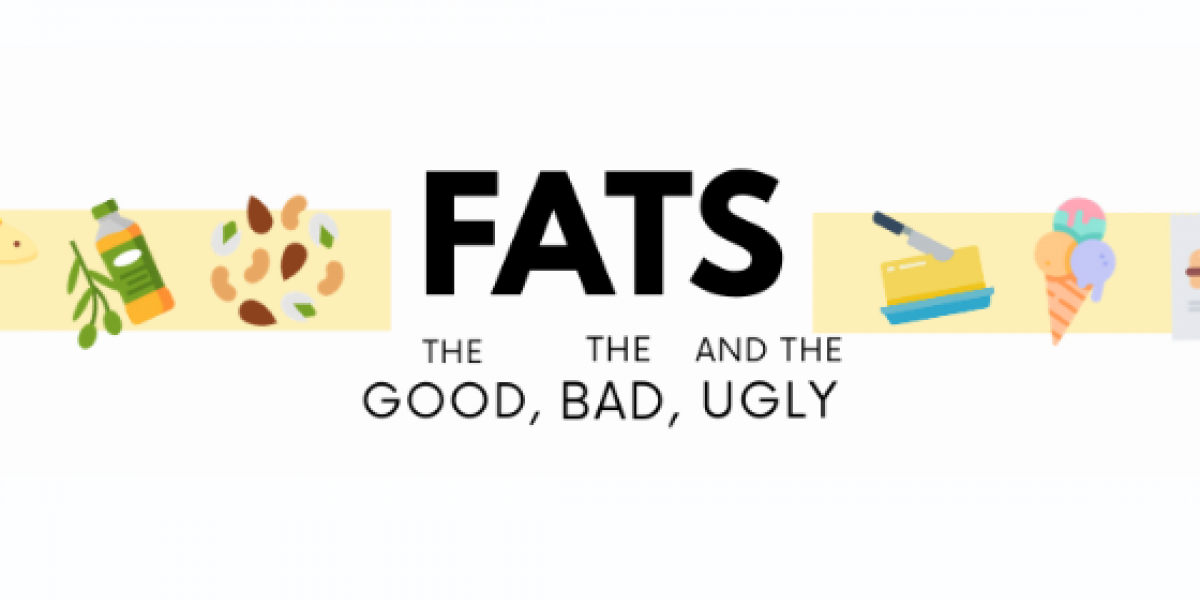
Fats: The Good, the Bad and the Ugly—Part 2
The fats we eat are very important for our overall health, but not all fats were created equal. In this post we discuss the different kinds of fats found in our food and give dietary recommendations for each one.
Unsaturated: The Good
These are fats that are liquid at room temperature, which would be different kinds of cooking oil, like olive, canola, and vegetable oils. However, unsaturated fats can also be found in other kinds of foods, such as nuts, seeds, avocados, and fish.
You may have also heard that there are different kinds of unsaturated fats:
○ Monounsaturated and Polyunsaturated: The difference between mono and polyunsaturated fats basically boils down to their chemical structures. Because both are unsaturated fats, both types have at least one double bond; it is the double bond(s) that keep the oil liquid at room temperature. “Mono” fats have one double bond while “poly” can have 2 or more double bonds. Both of these types of fats have shown to reduce total body cholesterol and LDL-cholesterol levels.
○ Omega-3 Fatty Acids: Have you ever heard of fish oil supplements? These are an example of a supplemental source of omega fatty acids! However, you can find these fatty acids in several foods, which are generally easy for our bodies to digest (with no funky aftertaste). Common sources of these foods include:
■ Walnuts
■ Flaxseeds
■ Fatty fish (like salmon and sardines).
Including omega-3’s into your diet has shown to improve your overall heart health, reduce triglyceride levels in your body, and prevent plaque from building up in your arteries. These are commonly found in foods like walnuts, flaxseeds, and fatty fish.
These sorts of fats have shown to have positive health benefits on our hearts, so we want to make sure a majority of the fat we include in our diet comes from unsaturated fats.
Saturated: The Bad...if you eat too much!
These are fats that are solid at room temperature because of their chemical structure; they contain higher amounts of hydrogen than other types of fat. They are also made up of only single bonds, which is what allows the oil to stay solid. The main sources of saturated fat in the typical American diet are foods from animals (visible fat on all meat, milk, cream, cheeses, yogurts, ice cream, etc.) and some plant oils (mostly tropical oils, palm, palm kernel and coconut oils, cocoa butter). “Sat fat” is also very high in all processed and fast foods. This type of fat has shown to be detrimental to our health when we consume them in high amounts. Studies show they can raise LDL-Cholesterol levels (“bad cholesterol”) and increase your risk in developing heart disease. We generally want to limit saturated fat down to less than 10% of your total calories; this is 200 calories (or less) for a typical 2000 calorie/day diet.
Trans: The Ugly!
Trans fats are industrial fats made through the scientific process called hydrogenation. This process converts a liquid fat into a stable semi solid fat. Trans fats are naturally found in low amounts in meats and dairy, but are very common in baked goods, fried foods, and some margarine/shortening products. Regularly consuming trans fat-containing foods has shown to increase LDL-cholesterol and decrease HDL-cholesterol in the body. That’s exactly the opposite of what we want to happen! Trans fats can also increase your risk of developing heart disease, stroke, and type II diabetes The FDA has placed an order for all food companies to remove the use of trans fats in their products, with a compliance date of January 1, 2020. While trans fats should now be eliminated from all foods, you may still see companies who are non-compliant to this rule. One way you can identify if a food item has trans fats inside them is to go to the ingredient list and find the words “partially-hydrogenated.” If you see “partially hydrogenated” on the ingredient list, you know that product contains trans fats.



